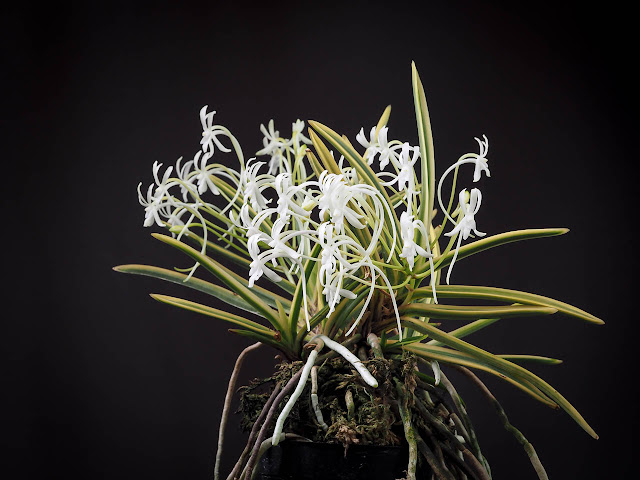naoki
Well-Known Member
This is an old variety (collected about 150 years ago from Matsusaka castle of Mie Prefecture), and it is also a good grower. So it is widely available and considered to be a beginner variety of Vanda (Neofinetia) falcata. But I think it gives me an impression of somewhat masculine beauty. It is probably coming from the fairly straight leaves standing up like swords.
It is supposed to have white fukurin (marginal variegation), but it seems that the color is somewhat influenced by the culture. I heard that more light makes it yellower; i.e., closer to the derived variety, 天恵覆輪 (Tenkei-fukurin), which has yellow fukurin.
A link to my Orchid Borealis blog post, where I translated information about the origin from a Japanese book.


It is supposed to have white fukurin (marginal variegation), but it seems that the color is somewhat influenced by the culture. I heard that more light makes it yellower; i.e., closer to the derived variety, 天恵覆輪 (Tenkei-fukurin), which has yellow fukurin.
A link to my Orchid Borealis blog post, where I translated information about the origin from a Japanese book.

















































